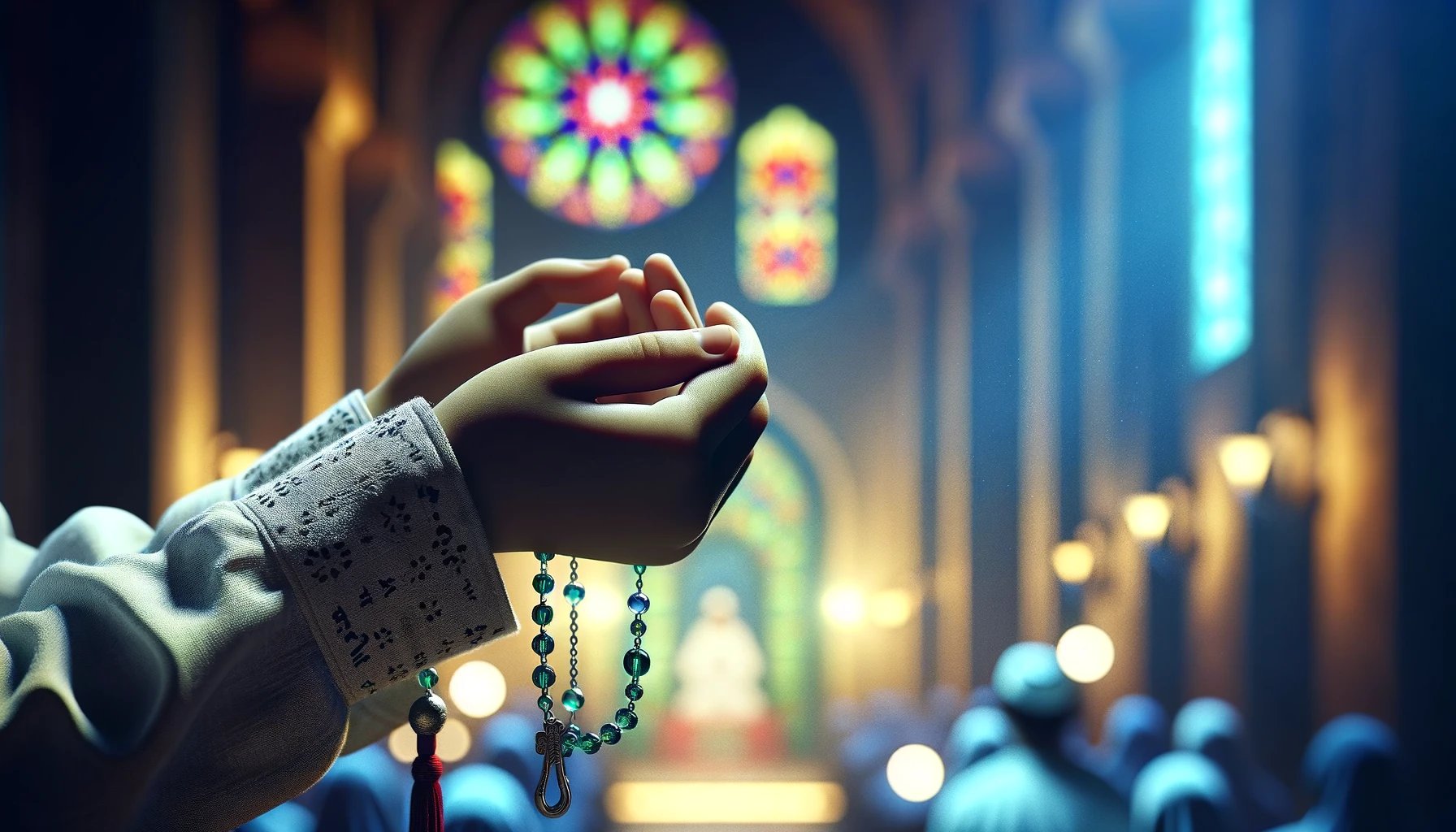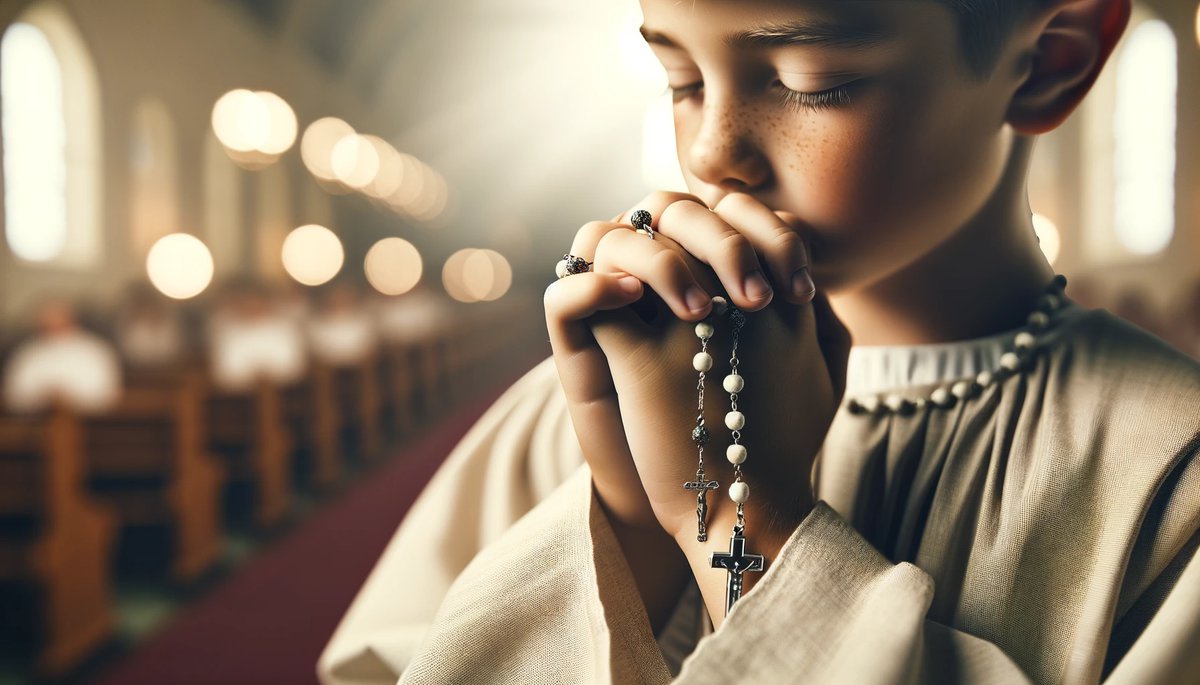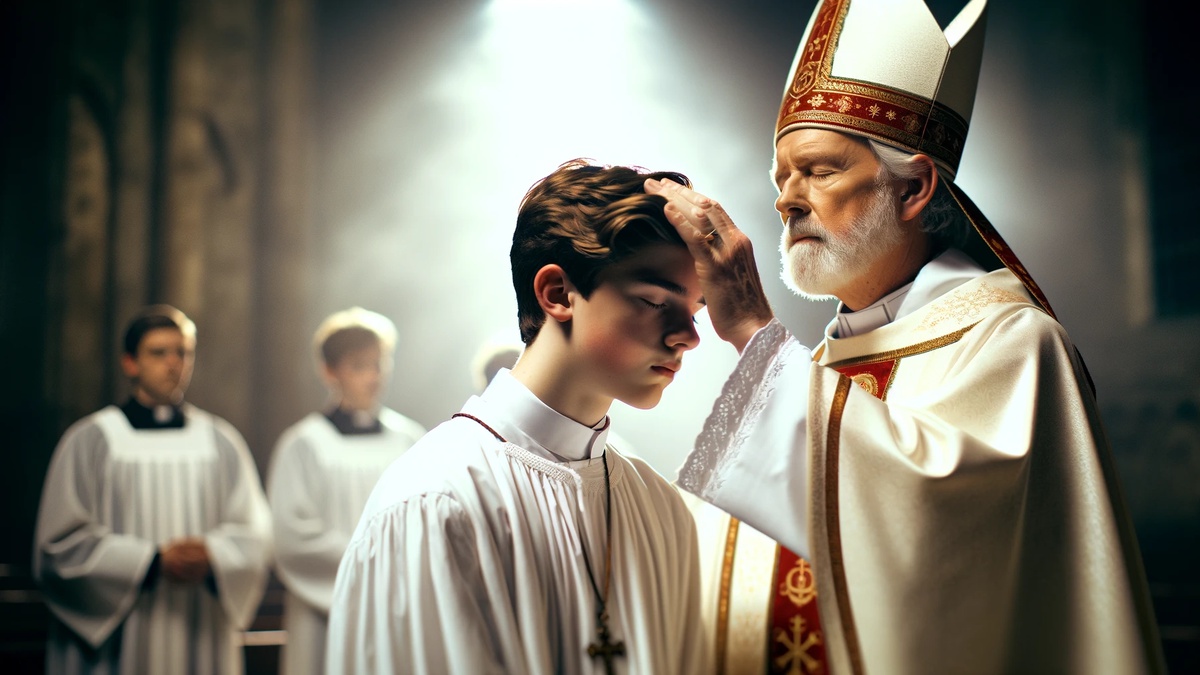Home>Theology and Spirituality>How To Celebrate A First Communion


Theology and Spirituality
How To Celebrate A First Communion
Published: February 19, 2024
Peter Smith, Editorial Director at Christian.net, combines deep insights into faith, politics, and culture to lead content creation that resonates widely. Awarded for his contributions to religious discourse, he previously headed a major organization for religious communicators, enhancing dialogue on faith's societal impacts.
Discover meaningful and memorable ways to celebrate a first communion with our guide. Explore traditions, gifts, and more. Perfect for those seeking guidance in theology and spirituality.
(Many of the links in this article redirect to a specific reviewed product. Your purchase of these products through affiliate links helps to generate commission for Christian.net, at no extra cost. Learn more)
Table of Contents
Choosing the perfect outfit
The first communion is a significant milestone in a child's spiritual journey, and choosing the perfect outfit is an essential part of the celebration. The attire worn on this special day holds deep symbolic meaning and reflects the solemnity and joy of the occasion.
When selecting the perfect outfit for a first communion, it's important to consider the traditional significance of the attire. For girls, a white dress is the customary choice, symbolizing purity and innocence. The dress should be modest and elegant, reflecting the solemnity of the sacrament. It's essential to ensure that the dress is comfortable for the child to wear throughout the ceremony and festivities.
In addition to the dress, accessories such as a veil or headpiece can complement the outfit and add a touch of grace and reverence. A delicate veil or floral headpiece can enhance the overall look while honoring the sacredness of the occasion.
For boys, a suit or a white dress shirt paired with trousers is the customary attire for first communion. The outfit should be well-fitted and comfortable, allowing the child to move freely and participate in the ceremony with ease. A tie or a simple cross necklace can serve as a meaningful accessory, symbolizing the child's commitment to their faith.
When choosing the perfect outfit, it's important to involve the child in the selection process, allowing them to express their individual style while adhering to the traditional guidelines. This involvement can make the experience more meaningful for the child, instilling a sense of pride and reverence as they prepare for this important rite of passage.
Ultimately, the perfect first communion outfit should reflect the solemnity of the occasion while allowing the child to feel comfortable, confident, and connected to their faith. By carefully selecting attire that embodies these qualities, families can ensure that the child's first communion is a truly memorable and spiritually significant event.
Read more: How Many Godparents For First Communion
Planning the ceremony and reception
Planning the ceremony and reception for a child's first communion is a deeply meaningful and joyous undertaking. It involves thoughtful consideration of both the religious significance of the event and the celebration that follows. Here are some essential aspects to consider when planning a first communion ceremony and reception:
Ceremony:
-
Selecting the Church: The first step in planning the ceremony is choosing a church that holds personal significance for the child and their family. It's important to consider the church's availability and any specific requirements for hosting a first communion.
-
Meeting with the Priest: Scheduling a meeting with the priest or clergy member who will be officiating the ceremony is crucial. This provides an opportunity to discuss the order of the service, any special readings or prayers, and the overall flow of the ceremony.
-
Attire and Accessories: Coordinating the child's attire with the religious significance of the event is essential. Ensuring that the outfit adheres to the church's guidelines and reflects the solemnity of the occasion is paramount.
-
Photography and Videography: Planning for photography and videography during the ceremony is important for capturing the precious moments of the child's first communion. It's advisable to discuss any restrictions or guidelines with the church beforehand.
Reception:
-
Venue Selection: Choosing a venue for the reception that aligns with the significance of the first communion is crucial. Whether it's a banquet hall, a restaurant, or a family home, the venue should provide a warm and inviting atmosphere for the celebration.
-
Menu Planning: Selecting a menu that caters to both the child and adult guests is important. Incorporating symbolic elements such as bread, wine, and traditional family recipes can add a special touch to the reception.
-
Decor and Ambiance: Decorating the reception venue with elements that reflect the spiritual significance of the first communion can create a reverent and joyous atmosphere. Incorporating religious symbols, such as crosses and candles, can enhance the ambiance.
-
Entertainment and Activities: Planning age-appropriate entertainment and activities for the children attending the reception can ensure that they have an enjoyable time. This may include games, crafts, or a designated play area.
-
Keepsakes and Favors: Providing guests with meaningful keepsakes or favors, such as personalized prayer cards or religious tokens, can serve as cherished mementos of the special day.
By carefully planning the ceremony and reception, families can create a memorable and spiritually enriching experience for the child celebrating their first communion. It's a time to honor tradition, celebrate faith, and create lasting memories that will be cherished for years to come.
Selecting meaningful gifts
Selecting meaningful gifts to commemorate a child's first communion is a cherished tradition that holds deep significance. The act of giving a thoughtful and symbolic gift not only celebrates the child's spiritual journey but also serves as a lasting reminder of their commitment to faith. When choosing gifts for a first communion, it's essential to consider items that resonate with the religious significance of the occasion and hold personal meaning for the child.
One timeless and meaningful gift for a first communion is a piece of religious jewelry. A delicate cross necklace or a medal depicting a patron saint can serve as a tangible symbol of the child's faith and devotion. These pieces of jewelry are not only beautiful adornments but also carry profound spiritual significance, reminding the child of their connection to their beliefs.
Another thoughtful gift idea is a personalized Bible or a prayer book. These timeless and sacred texts can become treasured possessions, serving as sources of guidance, inspiration, and comfort throughout the child's spiritual journey. Personalizing the Bible or prayer book with the child's name and the date of their first communion adds a special touch, creating a keepsake that will be cherished for years to come.
In addition to religious items, gifts that encourage spiritual growth and reflection are also meaningful choices. A beautifully crafted rosary or a set of prayer beads can provide the child with a tangible tool for prayer and meditation, fostering a deeper connection to their faith. Similarly, a decorative wall cross or religious artwork can adorn the child's living space, serving as a constant reminder of their first communion and the values it represents.
Beyond religious gifts, thoughtful keepsakes such as a commemorative photo frame or a personalized keepsake box can capture the essence of the first communion day. These items provide a means to preserve and display cherished memories, from photographs of the ceremony to mementos collected during the celebration.
Ultimately, the significance of a first communion gift lies in its ability to honor the child's spiritual commitment and serve as a lasting symbol of faith. By selecting gifts that embody these qualities and hold personal meaning for the child, family members and loved ones can contribute to the joy and reverence of this special milestone in the child's life.
Read more: How To Make First Communion Veils
Incorporating religious traditions and customs
Incorporating religious traditions and customs into a child's first communion celebration adds a profound layer of spiritual significance and reverence to the event. These traditions not only honor the religious heritage of the family but also provide a meaningful framework for the child to connect with their faith in a tangible and memorable way.
One of the central religious traditions in a first communion celebration is the reception of the Eucharist, a sacred rite in the Catholic Church. This act, in which the child receives the body and blood of Christ, symbolizes their initiation into the full participation of the Eucharistic meal, a cornerstone of the Christian faith. The preparation for this moment often involves religious education, reflection, and the understanding of the sacrament's significance, culminating in the child's first reception of the Eucharist during the communion ceremony.
In addition to the Eucharist, incorporating traditional prayers and blessings into the celebration can deepen the spiritual experience for the child and the entire family. Reciting prayers such as the Our Father, the Hail Mary, or the Act of Contrition together with the child can create a sense of unity and reverence, emphasizing the communal aspect of faith and the importance of prayer in the Catholic tradition.
Furthermore, customs such as lighting a baptismal candle, which symbolizes the light of Christ illuminating the child's path, and presenting the child with a special rosary or religious medal can serve as tangible reminders of their first communion and the spiritual journey that lies ahead. These customs not only enrich the ceremony but also provide the child with enduring symbols of their faith to carry forward into their lives.
Another significant tradition is the involvement of godparents or sponsors in the first communion celebration. These individuals, who play a guiding and supportive role in the child's spiritual upbringing, often participate in the ceremony, offering their blessings and encouragement as the child takes this important step in their faith journey.
By incorporating these religious traditions and customs into the first communion celebration, families can create a deeply meaningful and spiritually enriching experience for the child. These traditions serve as a testament to the continuity of faith, the significance of the sacrament, and the enduring presence of spiritual values in the child's life.
Creating a memorable celebration for the child
Creating a memorable celebration for a child's first communion is a cherished opportunity to honor their spiritual journey and create lasting memories that resonate with joy, reverence, and love. This milestone event marks a significant moment in the child's faith formation, and the celebration should reflect the solemnity and significance of the occasion while embracing the spirit of festivity and togetherness.
To begin, personalization plays a pivotal role in crafting a memorable celebration. Tailoring the event to reflect the child's interests, passions, and personality can infuse the day with a sense of authenticity and meaning. Whether it's incorporating their favorite hymns into the ceremony, selecting decorations that reflect their individual style, or planning activities that resonate with their spirit, personalization adds a heartfelt touch to the celebration.
Furthermore, creating a warm and inviting atmosphere is essential for fostering a memorable experience. From the choice of venue to the selection of decor, every element should contribute to an ambiance that exudes warmth, reverence, and joy. Thoughtfully arranged floral arrangements, soft lighting, and tasteful religious symbols can enhance the visual appeal of the celebration while evoking a sense of tranquility and spiritual grace.
In addition, the inclusion of meaningful rituals and gestures can elevate the celebration to a deeply profound and memorable experience. For instance, inviting close family members to offer blessings or words of wisdom to the child, or incorporating a symbolic ritual such as the lighting of a unity candle, can imbue the celebration with layers of significance and emotional resonance.
Moreover, capturing the precious moments of the day through photography and videography ensures that the memories created during the celebration will endure for years to come. Documenting the child's interactions with loved ones, their expressions during the ceremony, and the joyous atmosphere of the event preserves the essence of the day, allowing the child to revisit and cherish these memories as they continue on their spiritual journey.
Ultimately, a memorable first communion celebration for the child is one that seamlessly blends reverence, joy, and personal significance. By infusing the event with elements that reflect the child's individuality, creating a warm and inviting atmosphere, incorporating meaningful rituals, and preserving the memories through documentation, families can ensure that the child's first communion is a truly unforgettable and spiritually enriching experience.














